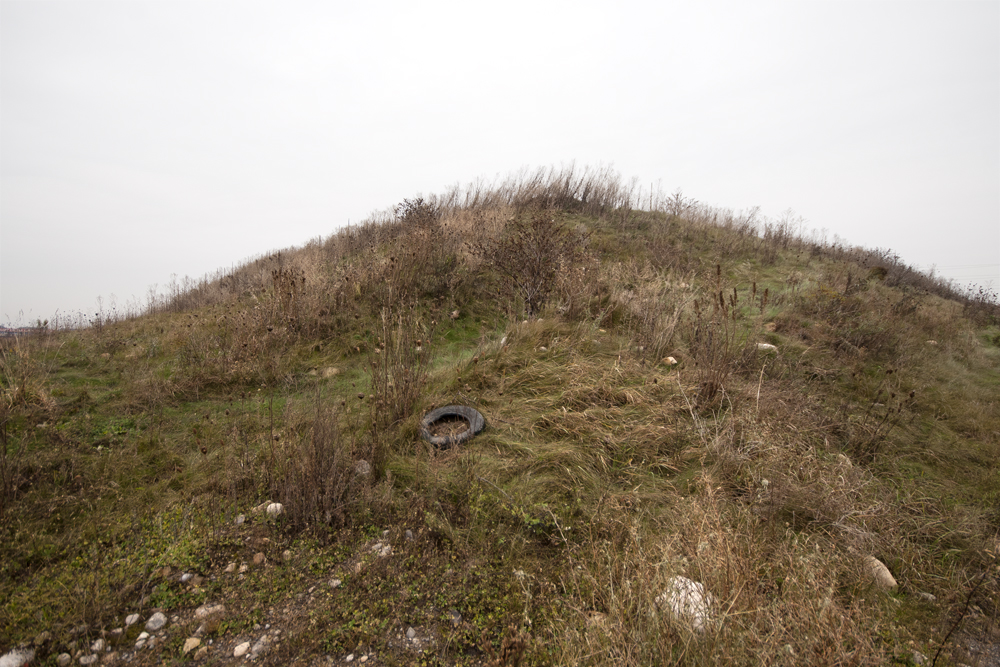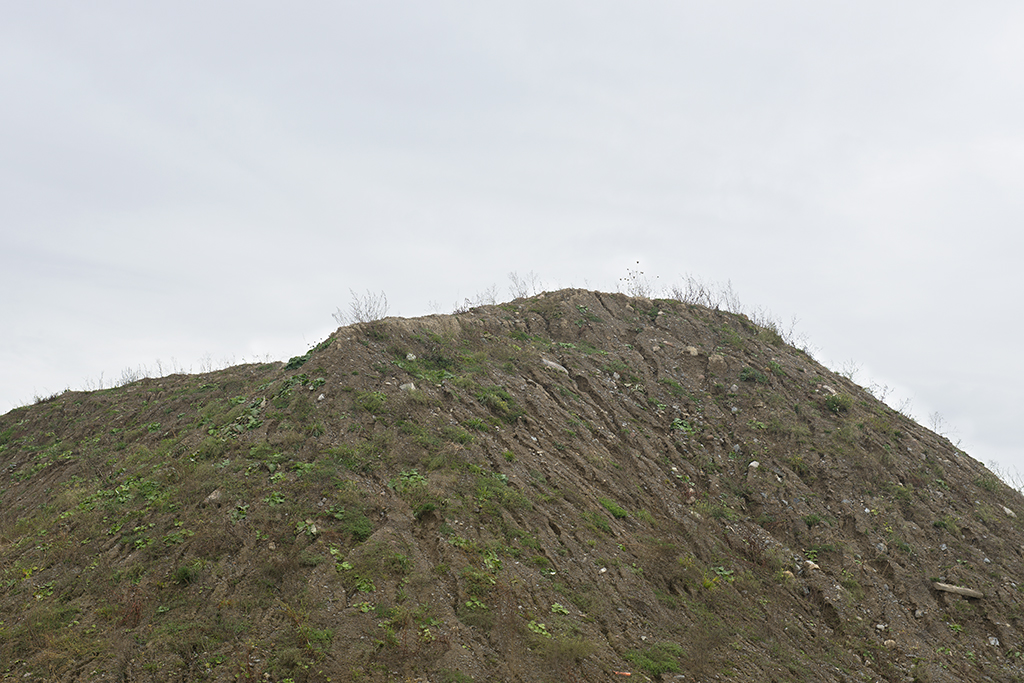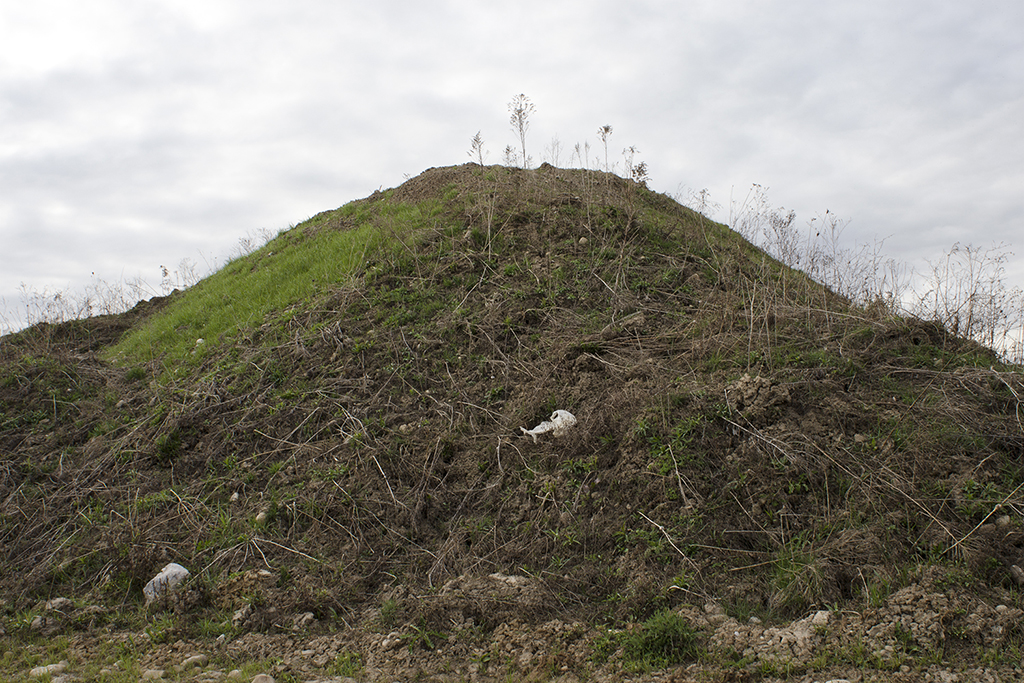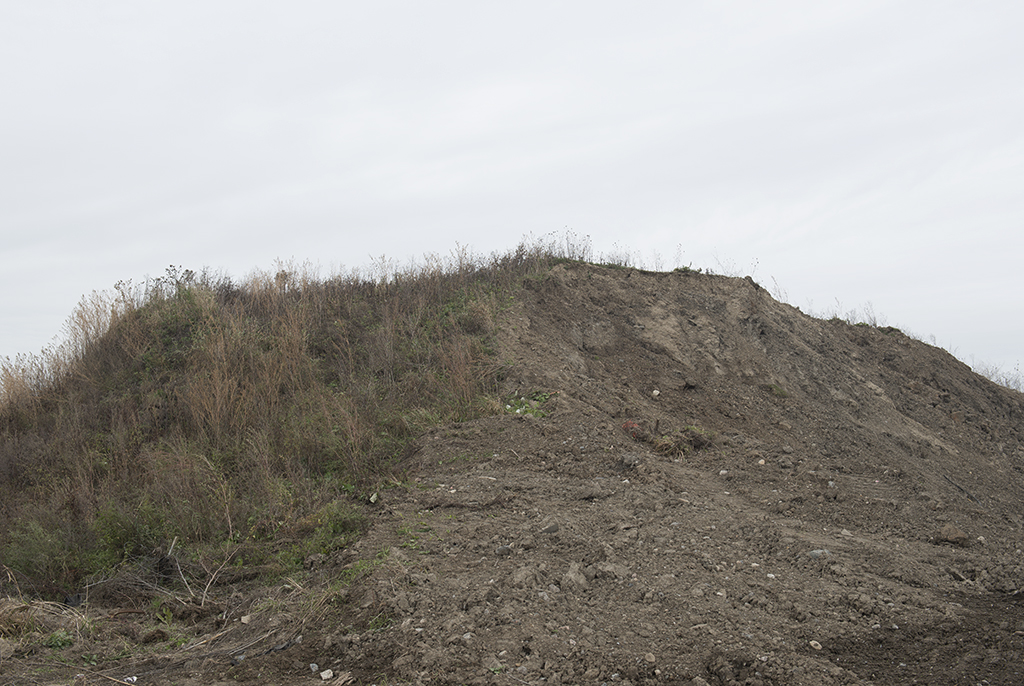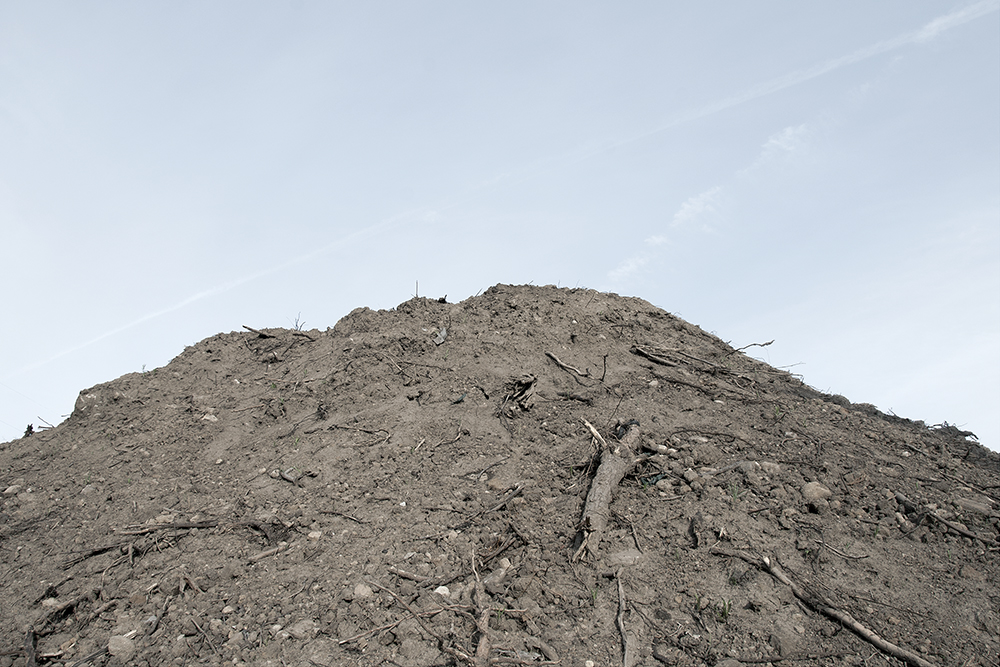
DIRT PILES
series of 16 archival pigment photographs, 24 x 16 inches, 2010-2014
The Law of conservation of mass states that matter can neither be created nor destroyed. It can only be rearranged. This means that the by-product of a certain kind of place—sprawling, well-drained parking lots, strips of level suburban backyards, and topographically featureless building lots—is extra material, dirt mostly, that needs to be rearranged and put somewhere.
Site grading, the process of re-sculpting terrain prior to building, evens a building site out to create a smoother surface, better for placing generic buildings and eventual vehicle access. The ideal site grading is one where the “cut” is equal to the “fill,” meaning the material of any high points can be used to fill in shallow areas. But this is rarely the case. Usually extra material remains – earth, rock and gravel – scattered with torn-up fragments of the former landscape. Neither useless nor particularly valued, it is heaped into a pile somewhere out of the way until a use for it is found or it can be moved somewhere else. Sometimes these dirt piles are quite ephemeral, remaining for only a short period of time during construction, but oftentimes they remain for long stretches of time, at the unfinished end of a suburban street, or looming behind new big box stores, perhaps dissipating from consciousness but never from physical presence.
The dirt pile is both relic of the landscape that used to be and a monument to the act that changed it. It is a measure of the forces of technology, industry, culture and economy that make the large scale reshaping of the terrain possible, profitable and desirable. It could be understood as the reciprocal form of how and what we build, a visible sign that marks the production of a certain kind of site and the logic that makes this profitable, with its demand for undemanding, generic buildings, easy vehicular passage and parking areas. The dirt pile in this way is a strange reflection of the built world.
I photograph the dirt piles because they, like most landscapes, are complicated. It is a deformed landscape, a landscape that has been taken apart and reassembled into a new form – the pile – which is itself also a whole landscape, stitched back together with its own weedy logic. A sense of disorientation, perhaps even an ungroundedness surrounds it.
In a traditional landscape, I imagine dirt as that which lies between the occupiable surface of the world and a firm ground, the terra firma as it is sometimes called, the solid earth beneath our feet. But the dirt pile reveals the fickleness of the earth’s surface. It has become something that is infinitely malleable, something that can be opened up, turned inside out, rifled through, piled up. The ground plane is not a stable reference point, nor, can we assume, a permanent horizon. Any place can be modified into any imaginable conception of what it could be.
Driving around, dirt piles are easy to find. They are speckled across our new construction topographies, placid but humming beasts. Though the dirt piles have been assembled in an act of deferral, they do not wait. The fresh earth is fertile and vegetation quickly takes advantage of the open soil. Things begin to grow and the torn-up landscape stitches itself back together, assimilating the leftover bits of tree, old tires, and brick into its weedy mess. And, as it grows, the distinction between the world of humanity and nature dissolve. The idea of the natural, as a temporal measure of what came before human activity, is dislodged. Here the natural and artificial have been torn up and piled on top of each other, sometimes repeatedly, till one can’t be sure where one ends and the other begins. They are the same thing.
